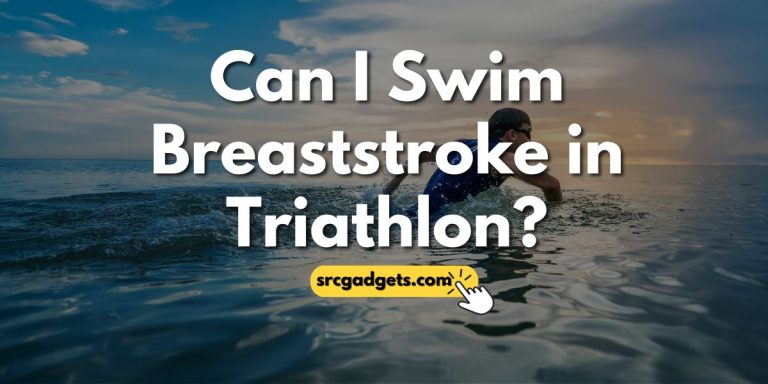Can You Wear Athletic Shorts to Swim? – Suitability and Tips
Swimming is a great, low-impact exercise that works your entire body. But if you head to the pool in just any old outfit, you may find your clothes weighing you down or creating drag in the water. So, what type of swimwear is best for getting in a good swim workout? Let s take a look at whether athletic shorts are a good option.
What are Athletic Shorts?
Athletic shorts, sometimes called gym shorts, are lightweight shorts made of breathable fabric like polyester or nylon. They are designed for playing sports or working out.
Athletic shorts are loose-fitting to allow free range of motion. Many have an elastic waistband or drawstring closure. The length varies from the upper thigh to just above the knee.
Can You Wear Athletic Shorts to Swim?
Yes, you can wear athletic shorts to swim, but there are some drawbacks to wearing athletic shorts to swim. Athletic shorts are less durable, more efficient, and more comfortable in the water than swimsuits. As they become wet, they may cause drag, absorb water, become damaged by chlorine, or reveal too much.
In addition to minimizing resistance in the water, swimsuits are designed to be hydrodynamic and breathable. Swimming faster and more efficiently is enhanced by smooth fabrics and tight fittings. Most athletic shorts become heavy when wet, creating a lot of drag.
Pros of Wearing Athletic Shorts to Swim
There are some benefits of wearing athletic shorts to swim, such as:
Comfort
Many individuals find athletic shorts more comfortable than tighter swim trunks or briefs. The loose fit allows you to move freely in the water. This is especially true for activities such as swimming and water aerobics. Moreover, athletic shorts are also ideal for water activities involving a high degree of movement.
Convenience
When transitioning from the gym to the pool, you don’t need to change out of athletic shorts; you can swim in the same ones you worked out in. However, it’s a good idea to change out of workout clothes afterward. Lingering sweat can irritate your skin, and chlorine can damage the fibers of your clothes, leading to wear and tear.
Affordability
A pair of shorts usually costs less than a swimsuit. If you only plan to swim occasionally, wearing shorts can save you money instead of buying specialized swimwear.
However, for regular swimmers, a swimsuit might be a better investment. Swimsuits are not only more hydrodynamic but also comfortable for longer durations, aiding in faster speeds and less drag.
Coverage
It has been noted that shorts provide more coverage than brief-style swimsuits. A lot of people prefer to have their thighs mostly covered when swimming laps in the gym pool. Shorts provide more support than briefs, so they are more suitable for swimming laps. Additionally, they are more comfortable to wear and provide more protection against the sun.
Cons of Wearing Athletic Shorts to Swim

There are also some drawbacks of wearing athletic shorts to swim, such as:
Drag
Athletic shorts, with their baggy shape, create more resistance in the water than swimsuits do. This added resistance slows you down and makes swimming laps harder. The loose fit of the shorts traps more water, causing drag. Consequently, swimmers exert more energy and may find it difficult to swim efficiently.
Absorbency
It is important to note that athletic shorts are designed to stay dry. However, swimsuits are made of quick-drying materials that are lightweight and will not weigh you down when wet.
Most athletic shorts take longer to dry than swimsuits. Swimming suits have a greater range of motion than athletic shorts, which are generally more limited. They are also more durable and last longer than athletic shorts.
Chlorine Damage
Many athletic shorts are made with cotton blends that may not stand up to repeated chlorine exposure. Swimsuits, however, are designed to withstand chlorine-filled pool water. Swimsuits are also made from chlorine-resistant fabric, which ensures their longevity. Additionally, they are designed to be form-fitting, ensuring the swimsuit stays on the body during swimming.
Revealing
Athletic shorts are typically longer than swim briefs but shorter than swim trunks. They should offer sufficient coverage when wet and be made of a breathable, quick-drying fabric. Additionally, consider options with convenient features like drawstrings and pockets.
Conclusion
You can wear athletic shorts to swim, but they are not ideal. Swimsuits are specially designed for swimming and provide better performance, comfort, and durability in the water. Athletic shorts can work in a pinch, but they tend to create more drag, take longer to dry when wet and may get damaged by chlorine over time. The loose fit of athletic shorts also offers less support than a swimsuit.
While athletic shorts may suffice for casual swimming, a dedicated swimsuit is better tailored for swimming as both exercise and sport. Your choice should align with your needs and goals as a swimmer. If you’re serious about swimming, it’s wise to invest in a quality swimsuit. However, for more laid-back swims, athletic shorts can be adequate.
Do you prefer swimming in athletic shorts or swimsuits? Let us know in the comments below!
Frequently Asked Questions
Is there a risk of athletic shorts becoming see-through when wet?
Yes, some athletic shorts might become translucent when wet, unlike swimsuits, which are designed to retain opacity.
Can wearing athletic shorts in chlorinated pools affect their color and texture?
Yes, chlorine can fade the color of athletic shorts and weaken their fabric over time.
How do athletic shorts affect swimming speed compared to regular swimsuits?
Due to the drag they create, athletic shorts can reduce swimming speed compared to streamlined swimsuits.






